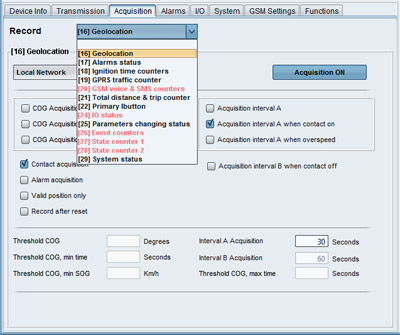
RDT is a unique and powerful software tool allowing GPS4NET's customers to easily maintain and control all of their GPS units at any location, throughout the unit’s lifecycle.
RDT offers support to any Telematics operation in terms of maintenance, configuration changes and firmware upgrades. This new solution is offered to our customers utilizing GPS4NET devices for various applications free of charge. Additional benefits offered by utilizing RDT are the easily accessible web based provisioning center, device's status information, fast and efficient information retrieval, ensured privacy and security utilizing administration capabilities.
- Saves time and effort in maintaining, upgrading and programming the GPS units.
- Allows full control on unit configurations anytime and anywhere.
- Offers a variety of unique and flexible management, supervision and maintenance tools.
How it works?
RDT gathers unit information including the factory settings embedded since the manufacturing process. The unit details are stored in each device or in the provisioning center and include information regarding configuration programming, firmware updates, maintenance provided by the unit and unit manufacturing data.
RDT is a software developed for supporting only the devices produced by GPS4NET. The software is compliant with all models of hardware produced since 2005 and is offering a Firmware dependent interface. Thus the interface will provide the proper layout for the queried device.
RDT is a versatile powerful tool for remotely interact with devices equipped with an ISM and GSM interfaces and provides the ability to interact with several devices in the same time over a wide range area from outside the vehicle. This radio interaction is highly appreciate by technicians who by a few clicks are able to diagnose the hardware without the need of a physical interaction.
RDT is providing radio scan function, thus discovering every GPS unit in area and populates a list with the identification of those devices. By clicking each unit the ISM Dongle will issue P2P commands for requesting additional information. The ISM protocol defines also the time slot of each addressable device, by allocating a certain momentum for transmission and reception, thus avoiding any frame collision.
The ISM protocol was fully developed by GPS4NET and is dedicated for automotive application, as back in 2005 other protocols required higher implementation costs and lower versatility in automotive environment. Nevertheless the protocol was kept proprietary and secure, thus providing to distributors and integrators a certain note of anti-hijacking confidence. The protocol is called G4NISMP and integrates procedures for network broadcasting, network addressing and ping, but different than any other well known protocols.








